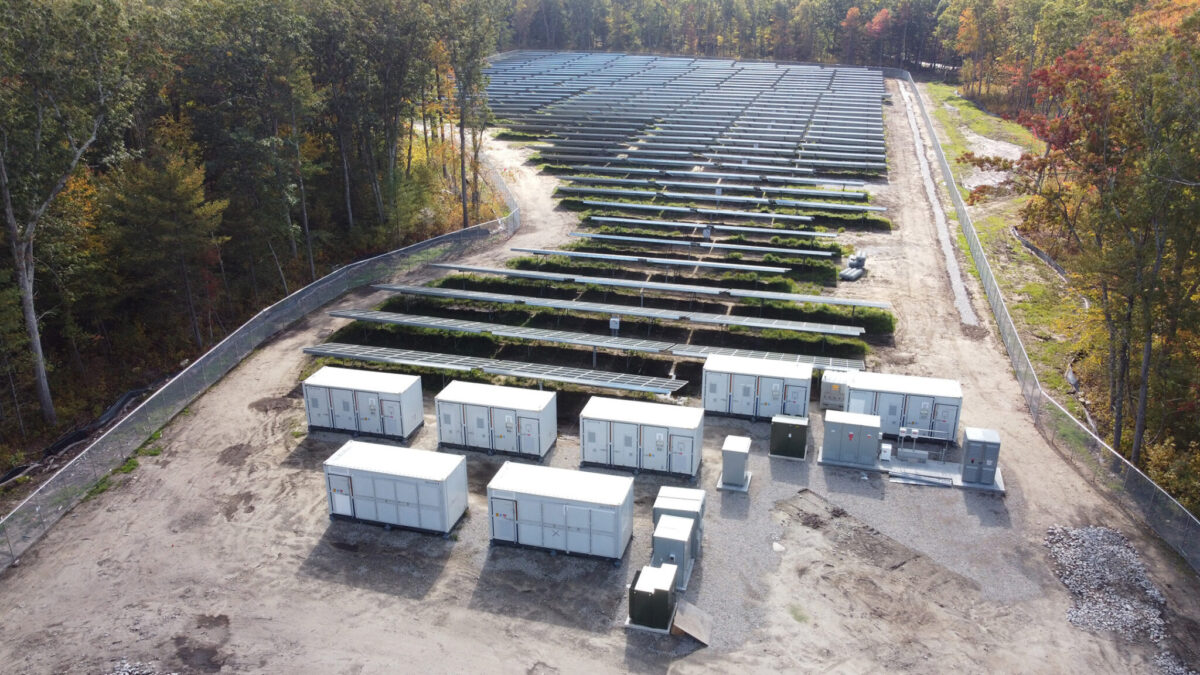Demand for energy storage is on the rise. The increase in extreme weather and power outages also continue to contribute to growing demand for battery energy storage systems (BESS). As a result, there are many questions about sizing and optimising BESS to provide either energy, grid ancillary services, and/or site backup and blackstart capability. Before beginning BESS design, it’s important to understand auxiliary power design, site layout, cable sizing, grounding system and site communications design.
- Auxiliary power design
Auxiliary power is electric power that is needed for HVAC for the battery stacks as well as control and communications. This sounds deceptively simple for equipment that has no moving parts, yet it is often a moving target, as BESS vendors continue to morph their designs after an order is placed. Therefore, when it comes to auxiliary design, you must be able to answer the following questions:
- Do you want a separately metered utility service for the auxiliary power so the cooling still works if the utility trips their recloser to the BESS? This has been a real-world problem for some sites.
- What voltages are needed – three phase 480 V and 208 V, single phase 120/240 V, or does the equipment happen to come with European-style three phase 400 V and 230 V equipment?
- What is the real design load – sum of all HVAC nameplates?
- How much margin is really in those HVAC nameplate values?
- Is there a smart controller to prevent concurrent start of all HVAC compressors?
- If high hydrogen is sensed and ventilation is triggered to go full on, are the fans staggered by a few seconds to avoid concurrent inrush currents, and does it include compressors?
- For northern located projects, is heating load the peak design issue?
- For the typically large uncertainty, should the aux transformer(s) be provided with fan kits as insurance if the loads end up being larger?
- Should the aux transformer(s) be provided with a fan rating anyway just so that they can be economically downsized?
- What about the little things like lighting and security power?
These are just a few examples of the many questions that must be answered prior to embarking on the auxiliary design.
- Site layout
BESS site layout can be easy or complicated, depending on the site location, the site owner’s preferences or requirements, and the BESS itself. Some of the main questions to consider for the site layout are:
- Does the BESS vendor have a minimum spacing requirement?
- Does the owner have a minimum spacing requirement?
- How much of a lip do you want on the pad the containers sit on – 6 inches; 2 feet?
- Do you want to be able to fully open both doors on back-to-back containers?
- How do you make the cable runs short and simple?
- Realistic cable sizing
BESS systems usually involve short, high ampacity underground runs from the battery rack containers to the inverters or DC/DC converters. In order to avoid excessive cable derates and resulting in larger cables and costs for short underground runs, you will need to consider:
- Will the owner’s engineer require a design per NEC tables, or is a site-specific ampacity calculation allowable?
- Is the owner open to alternative cabling methods compared to multiple runs of conductors in large conduits?
- Has the vendor clearly identified where power and communications cables enter the enclosures?
- Does the container just take one large feed, or is it split into two separate feeds that land on dual fused disconnect switches inside the enclosure?
- What about future expansion/augmentation battery segments, and how do these get connected?
- Grounding system design
Many BESS sites are relatively small, and substation grounding design methods don’t really apply. So you need to ask, what is the design goal? Depending on how the design is approached, a site can either end up with an expensive mesh grid or a reasonable design to connect all of the equipment, and both will be equally safe.
Additionally, are you concerned about possible Radio Frequency Interference being generated by the BESS? Some vendors require additional methods, such as six additional grounding connections per inverter. Is the BESS located at a 911 Call Center or in a remote area? Answering questions like this will help your design and installation process go as smoothly as possible.
- Site communications design
Communications are an integral part of BESS design, as it allows for remote data monitoring and/or management, and for the BESS system to communicate with the power grid as well as connect to peripheral components. The following site communications design questions should be answered in order to properly design this aspect of a BESS:
- What items need to be connected?
- Is it a radial connection between containers like string inverters, or does it need an extra conduit run to make a communications loop?
- What sort of data monitoring is there, and how does it communicate back to the owner?
- Does the site point of interconnection control device, such as a recloser, need to be monitored/controlled as well?
- How is the required metering being accomplished, and what does it need to talk to?
- Is a utility connection required, and with what communication method?

Joe Jancauskas is a senior electrical engineer at Castillo Engineering, a design and engineering firm based in Maitland, Florida that offers full service solar and energy storage design, engineering, and consulting services to developers, EPC contractors and utility companies.
The views and opinions expressed in this article are the author’s own, and do not necessarily reflect those held by pv magazine.
This content is protected by copyright and may not be reused. If you want to cooperate with us and would like to reuse some of our content, please contact: editors@pv-magazine.com.








By submitting this form you agree to pv magazine using your data for the purposes of publishing your comment.
Your personal data will only be disclosed or otherwise transmitted to third parties for the purposes of spam filtering or if this is necessary for technical maintenance of the website. Any other transfer to third parties will not take place unless this is justified on the basis of applicable data protection regulations or if pv magazine is legally obliged to do so.
You may revoke this consent at any time with effect for the future, in which case your personal data will be deleted immediately. Otherwise, your data will be deleted if pv magazine has processed your request or the purpose of data storage is fulfilled.
Further information on data privacy can be found in our Data Protection Policy.